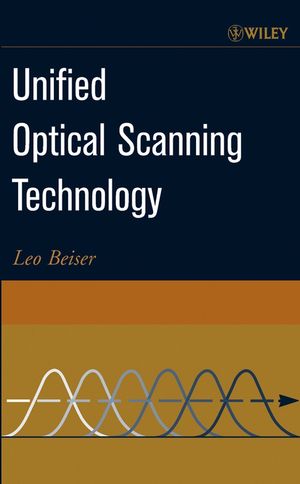Unified Optical Scanning TechnologyISBN: 978-0-471-31654-1
Hardcover
185 pages
February 2003
 This is a Print-on-Demand title. It will be printed specifically to fill your order. Please allow an additional 10-15 days delivery time. The book is not returnable.
|
||||||
Preface xi
1 INTRODUCTION-TECHNOLOGY OVERVIEW AND UNIFYING PRINCIPLES 1
1.1 Optical Scanning Characteristics and Disciplines 1
1.2 Active and Passive Scanning 3
1.3 Input, Output, and Remote Sensing Systems 8
1.4 Optical and Resolution Invariants; Optical Transfer 9
1.5 System Architecture 12
2 SCANNING THEORY AND PROCESSES 19
2.1 The Point Spread Function and Its Convolution 19
2.2 Quantized or Digitized Scan 27
2.3 Gaussian Beam Propagation 31
2.4 Scanned Quality Criteria and the Modulation Transfer Function 37
3 SCANNED RESOLUTION 45
3.1 Influence and Significance of Scanned Resolution 45
3.2 Aperture Shape Factor 50
3.3 The Resolution Equation, the Resolution Invariant, and Beam Propagation 54
3.4 Augmented Resolution 56
3.5 Resolution in Passive and Remote Sensing Systems 61
4 SCANNER DEVICES AND TECHNIQUES 63
4.1 Scanner Technology Organization 63
4.2 High-Inertia Scanning 65
4.3 Rotating Polygons 65
4.4 Holographic Scanners 85
4.5 Oscillatory (Vibrational) Scanners 100
4.6 Scanner-Lens Relationships 108
4.7 Low-Inertia Scanning 112
4.8 Acoustooptic Scanners 113
4.9 Electrooptic (Gradient) Scanners 124
4.10 Agile Beam Steering 128
5 CONTROL OF SCANNER BEAM MISPLACEMENT 147
5.1 Cross-Scan Error and Its Correction 148
5.2 The Ghost Image and Its Elimination 155
6 SUMMARY-MAJOR SCANNER CHARACTERISTICS 161
6.1 Comparison of Major Scanner Types 164
References 169
Index 179



